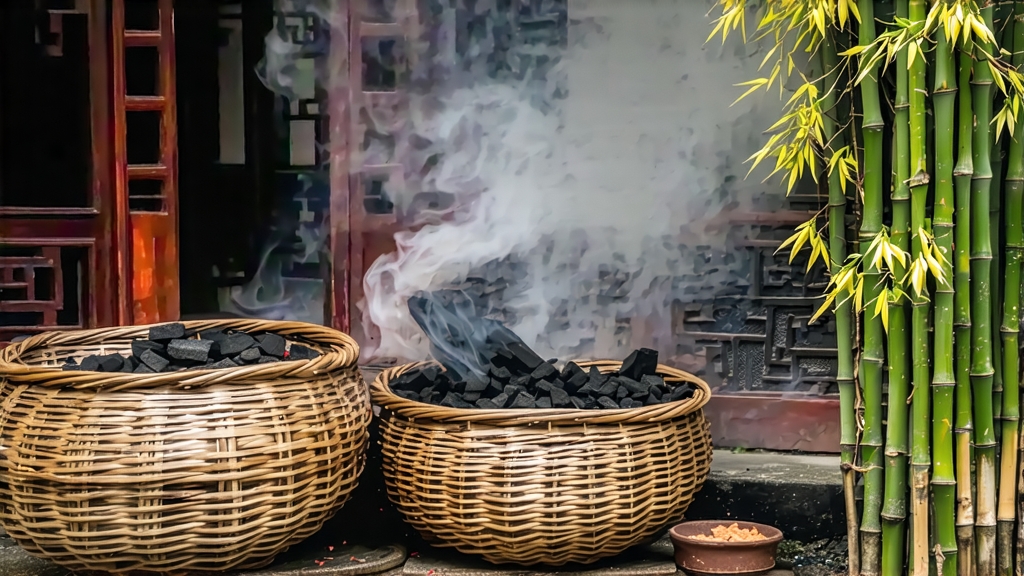
Tucked high in the mist-veiled Dabie Mountains of western Anhui Province, Huoshan Huangya has quietly embodied the elegance of Chinese yellow tea for more than fourteen centuries. Unlike the better-known green teas that surround it on every souvenir shelf, this yellow tea once travelled in sealed bamboo tubes to the courts of the Tang, Song and Ming dynasties, earning the accolade “imperial tribute tea” because its leaves, when gently coaxed into a micro-fermentation, exude a luminous yellow-green infusion that tastes of mountain apricot, fresh chestnut and orchid. Today, only a few hundred households still master the exacting craft, making Huoshan Huangya one of the rarest authenticated styles in China’s six-tea spectrum. For the international drinker who thinks “yellow tea” is simply a hue, Huoshan Huangya offers a living lesson in patience, humidity and the alchemy of time.
History: From Mountain Hermitage to Forbidden City
The first written record appears in the Tang Dynasty’s Classic of Tea (c. 780 CE), where Lu Yu praises the “tender buds of Huoshan, yellow at the vein, sweet at the throat.” During the Song, Buddhist monks at the nearby Fozu Temple discovered that piling the slightly wilted leaves in a humid side-chamber for one night removed the “green astringency” while adding a mellow, almost milky note. By the Ming Xuande era (1426-1435) the tea had become so coveted that county magistrates sealed the mountain passes each spring, allowing only imperial commissioners to carry the finished leaves down the She River to Nanjing. After the fall of the Qing, the recipe drifted toward extinction; it was resurrected in 1972 when a team of agronomists located 87 ancient seedling trees above 800 m elevation and propagated them clonally. The modern Protected Geographical Indication (PGI) enacted in 2008 restricts genuine Huoshan Huangya to the townships of Huoshan, Jinzhai and Yuexi, within 31° north latitude and 500–800 m altitude.
Micro-Terroir: Why the Mountain Smells of Apricot
Huoshan sits at the intersection of northern subtropical and warm temperate zones. Morning clouds rise from the Pi River gorge, trapping 85 % humidity, while afternoon sun angle is softened by bamboo forests that release 3–5 % more diffused light than tea gardens at lower elevations. The soil is a coarse-grained granite loam, pH 5.2, rich in ion-exchangeable potassium—ideal for synthesizing the amino acid theanine. Locals insist that the mountain’s wild apricot trees share root mycorrhiza with the tea bushes, imparting a recognizable stone-fruit bouquet. Whatever the science, gas-chromatography studies done at Anhui Agricultural University show 1.8 times more γ-decalactone (the “apricot” aroma compound) in Huoshan Huangya than in neighboring green teas.
Pluck & Grade: One Bud, One Standard
Authentic production begins around Grain Rain (20 April) when the bud reaches 15–20 mm, still sheathed in a faint down. Three grades are recognised under the PGI:
- Special Grade (te ji): 100 % single unopened bud, ≤15 000 buds per 500 g.
- Grade 1: one bud with one leaf just unfolding, ≤25 000 sets per 500 g.
- Grade 2: one bud with two leaves, still shorter than the bud itself.
Plucking is done between 5 a.m. and 9 a.m. while leaf moisture is above 78 %; baskets are lined with thin bamboo leaves to prevent compression bruising.
Craft: The Secret 48-Hour “Men Huang”
Yellow tea’s defining step is men huang—literally “sealing yellow”—a controlled micro-fermentation that sits between green tea’s kill-green arrest and black tea’s full oxidation. For Huoshan Huangya the choreography is as follows:
- Sha Qing (Kill-Green): 160 °C on a shallow bamboo-roasted wok for 3 min, until leaf temperature hits 85 °C; enzymes are 95 % denatured yet a sliver of polyphenol oxidase survives.
- Re Niao (Hot Rubbing): the scalding leaves are hand-rubbed for 30 s to bruise the cut